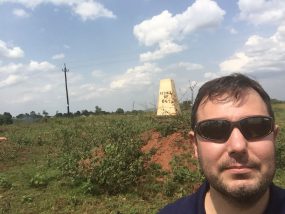Outbreak Responder Stories
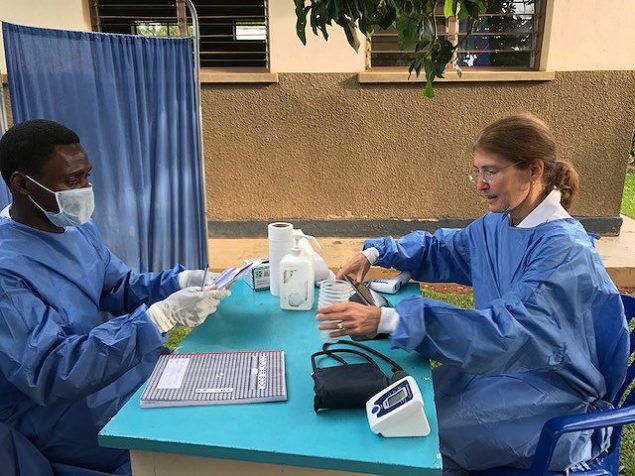
Since the current outbreak of Ebola emerged in August 2018, nearly 400 CDC volunteers have deployed to the Democratic Republic of Congo (DRC), neighboring countries, and Geneva to help fight the disease. Some have deployed three, four, or a half-dozen times. And then there’s Rosalind Carter, an epidemiologist and one of CDC’s leading vaccine experts. Carter has packed her bags and taken off 12 times so far, making her the response’s most frequent flyer.
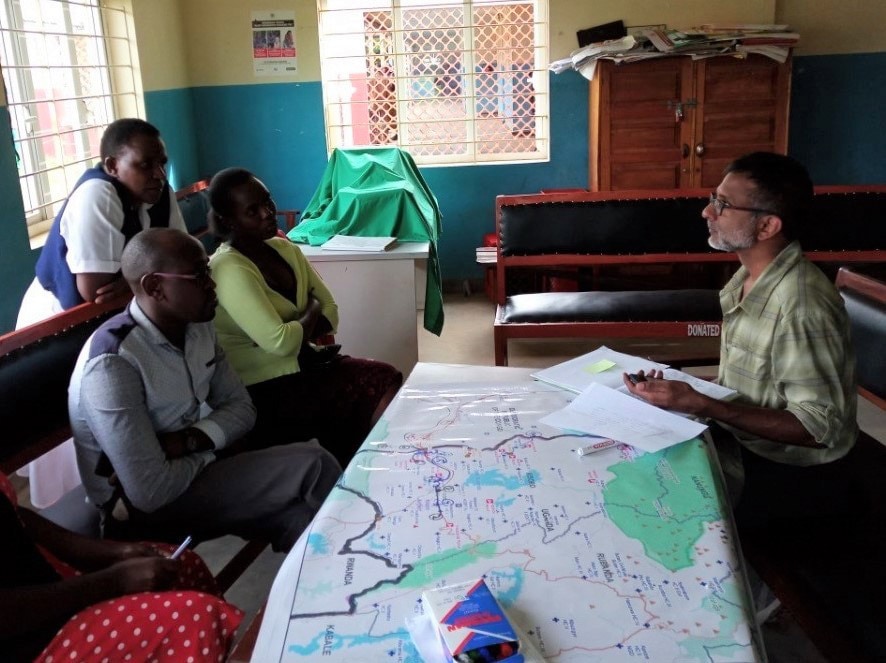
Along Uganda’s southwestern border, people regularly cross into and out of the Democratic Republic of the Congo (DRC).
They come to sell goods at Ugandan markets, to visit family, to seek health care, or to seek refuge from the ongoing conflict in DRC. However, because the Ebola outbreak is still active in DRC in areas near the Ugandan border, people crossing the border might be carrying the deadly virus.
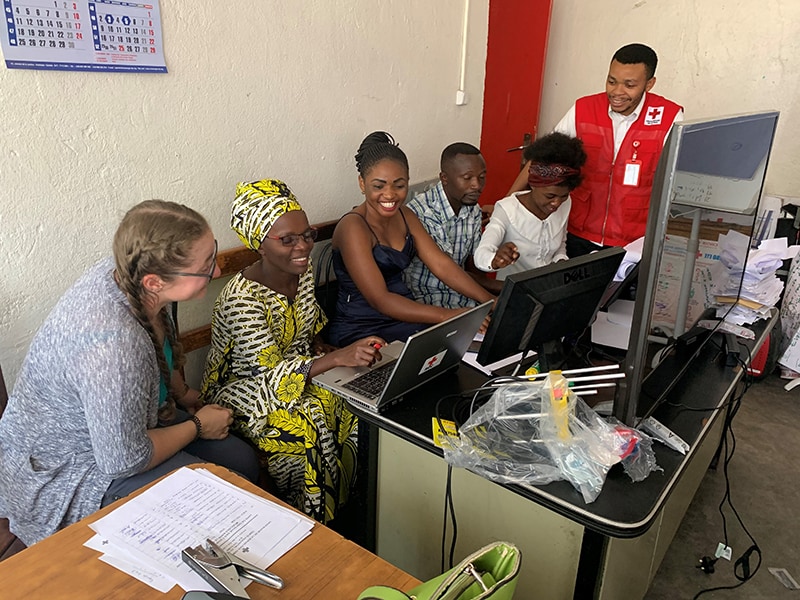
In much of the DRC, families wash the bodies of their relatives before burial. This practice puts the families at risk of contracting the Ebola virus, which is spread through contact with an infected person’s blood or bodily fluids. But placing the bodies in an opaque plastic bag denied them that opportunity to say goodbye—and fueled suspicions.
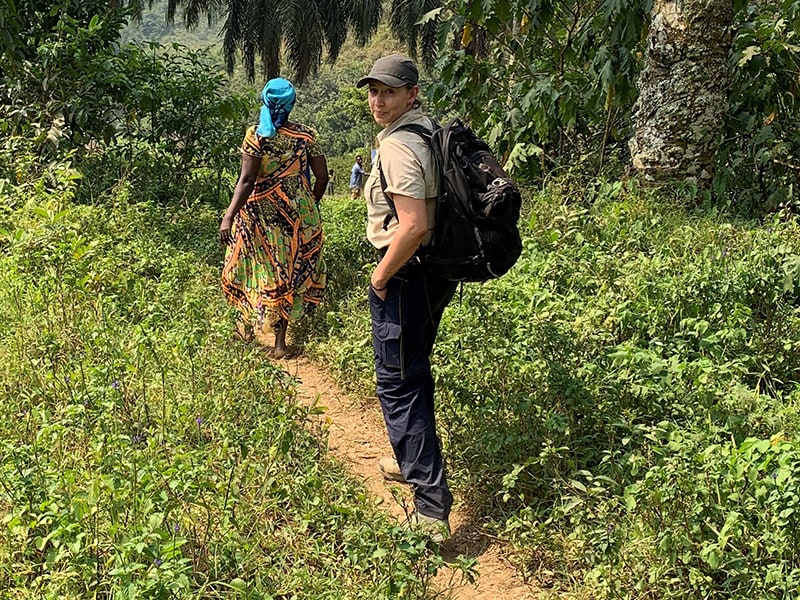
In the Democratic Republic of the Congo (DRC), the “disease detectives” of CDC’s Epidemic Intelligence Service (EIS) are proving their worth as they work to stop the second-largest Ebola outbreak in history.
EIS officers spend two years on the front lines of public health to protect Americans and the global community. As part of their service fellowship, they get on-the-job training with seasoned veterans while working to identify and control a disease outbreak and recommend practical approaches to prevent future epidemics.

In Goma, Ebola isn’t the only looming threat.
The Nyiragongo volcano towers over the city, which serves as headquarters for the CDC response to the Ebola outbreak in the eastern Democratic Republic of Congo. The roughly 3,400-meter (11,000-foot) mountain is one of the world’s most active volcanoes, “and it’s well understood that it could erupt at any time,” says Molly Patrick, a CDC environmental engineer.
“It’s just a surreal situation to be in with this ever-present explosive danger,” says Patrick, one of the more than 300 CDC volunteers who have been dispatched to the DRC to fight the current Ebola epidemic.
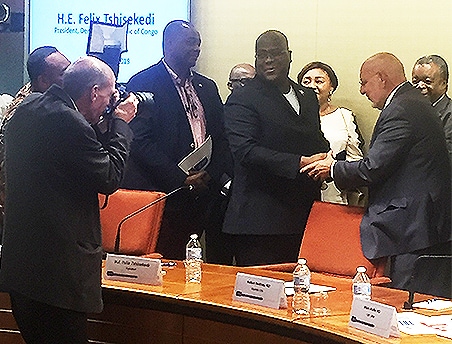
When President Felix Tshisekedi of the Democratic Republic of the Congo (DRC) came to CDC headquarters in late September, Jim Gathany was on the scene in his usual role—“a fly on the wall with a camera.”
But he’s rooting for Tshisekedi and the DRC’s government in their battle against an Ebola outbreak that’s killed more than 2,000 people in a country Gathany considers home. Gathany, CDC’s official photographer, was born in what’s now the DRC and didn’t live in United States until he was six.
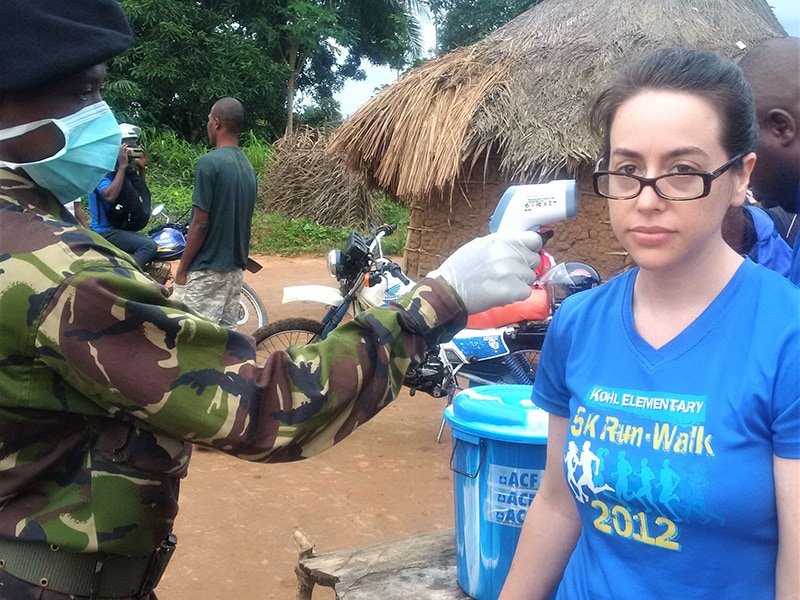
In the fight against Ebola in the Democratic Republic of the Congo, Dana Schneider can rely on some familiar skills.
There’s her knowledge of French, which she studied since 7th grade. There’s her familiarity with Africa rooted in her stint as a Peace Corps volunteer. And there’s her experience with the last major Ebola outbreak in West Africa, which took her back to Guinea, the same country where she’d been with the Peace Corps.
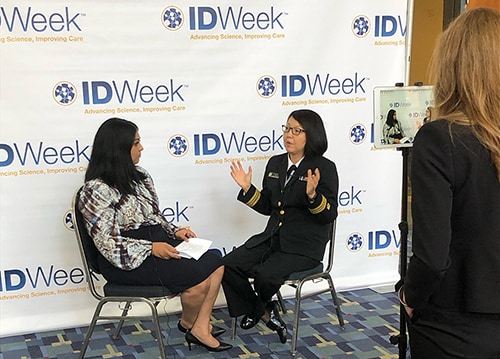
Dr. Mary Choi has been the team lead in Goma, CDC’s field headquarters in eastern DRC, and helped develop a mobile app that can help trace contacts of people sick with Ebola by estimating when they might have been infected.
Despite fresh knowledge and advances in vaccination and drugs to treat the disease since the last major outbreak, she says that “There’s no silver bullet.”
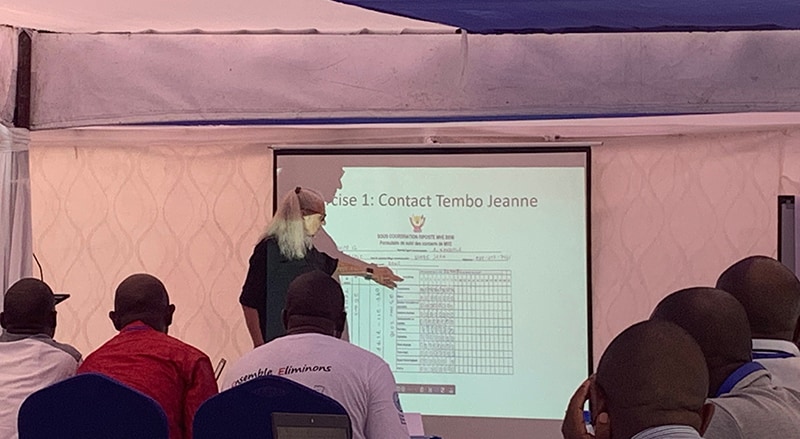
The STEER program—Surveillance Training to Enhance Ebola Response and Readiness—provides training for a network of healthcare workers in affected health zones in DRC, where Ebola has killed more than 2,000 people in three eastern provinces.

In fighting an outbreak of Ebola, there are days of slow, steady progress – and then there are days of drama.
Nathan Furukawa, a CDC Epidemic Intelligence Service officer, saw both when he was deployed to the Democratic Republic of the Congo from June through August this year.
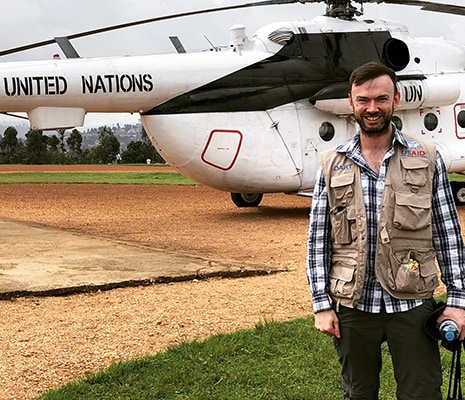
Since May of this year Saindon has been based in the city of Goma He is the CDC representative on the U.S. Agency for International Development’s (USAID) Disaster Assistance Response Team (DART). As the team’s deputy leader for medical and public health, he helps decide where USAID resources can be best put to work against the disease.
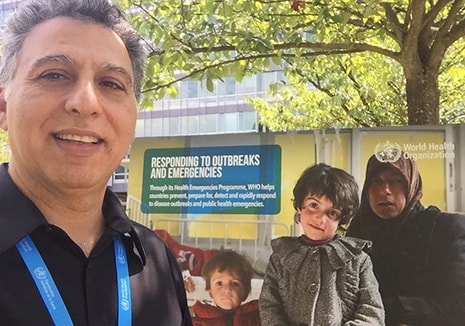
People travel more now than they ever have before, from city to city and across international borders. And making sure travelers from and in the Democratic Republic of the Congo, which is battling a year-long outbreak of Ebola virus disease, aren’t bringing that illness with them is what keeps Shahrokh Roohi busy.
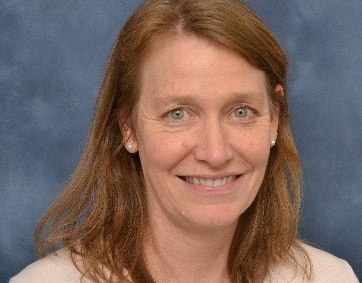
Like most people asked to deploy, Dr. Barbara Marston’s plate was more than full. However, Marston has great empathy for those responsible for filling key positions in the current Ebola response—she and her team were responsible for identifying many of the deployers for CDC’s response to Ebola in West Africa. When she was asked to support the Ebola outbreak in eastern Democratic Republic of the Congo (DRC) as CDC’s liaison to World Health Organization’s (WHO) headquarters, she was eager to find a way to say yes.
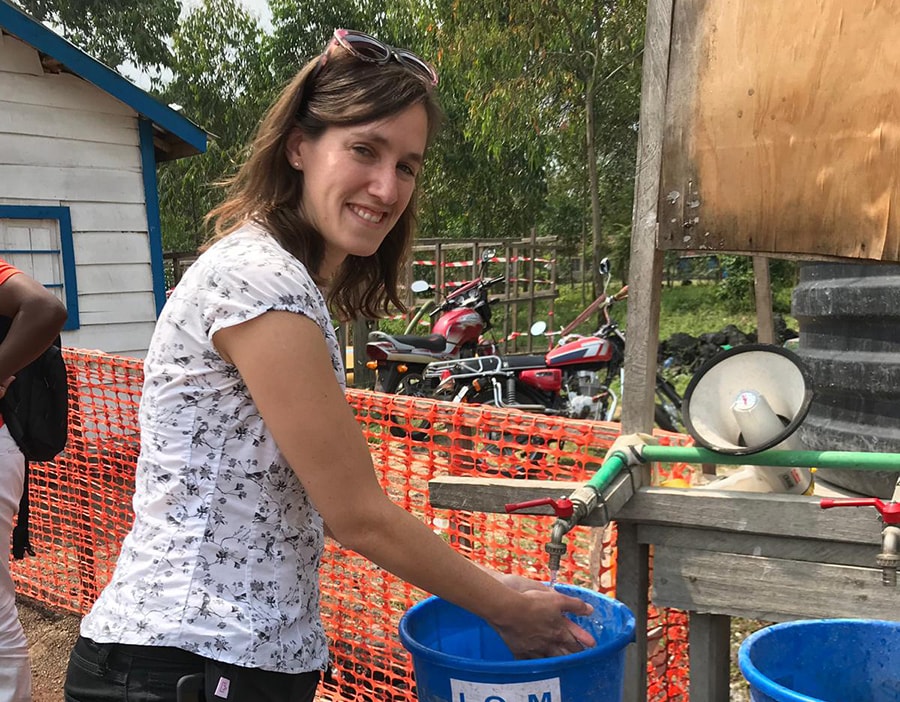
Stopping the spread of the Ebola outbreak in the Democratic Republic of the Congo (DRC) means keeping a close eye on the borders.
Travelers leaving the country are getting closer scrutiny because of the year-old epidemic. So are people traveling within the country and coming to unaffected cities from areas where the disease has taken hold.
This close watch kept Epidemic Intelligence Service (EIS) officer Amy Heinzerling busy during her recent deployment to the DRC’s eastern border city of Goma. She called her deployment “an incredible opportunity,” but also “humbling, as a lot of experiences are in public health.”
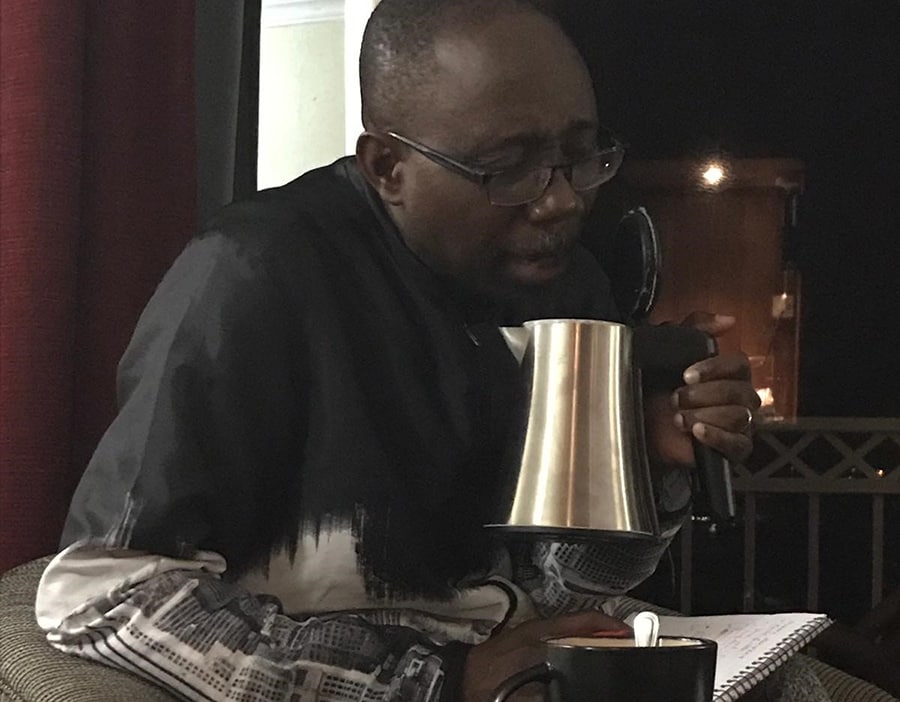
Here’s something you don’t see every day: A man talking into a coffee pot.
But for CDC epidemiologist Norbert Soke and a team of colleagues in a hotel in Kinshasa, it was a way to break through a technological communication barrier. The pot held not coffee, but a cell phone—and speaking into it created an echo chamber that let the team power through a poor connection with colleagues in Goma.
“That’s the beauty of field work. You need to be creative sometimes,” Soke says.
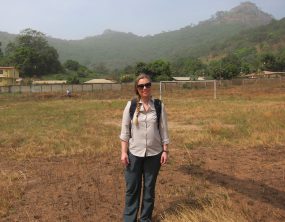
CDC health statistician Dana Haberling finds ways to sort through numbers like these in search of patterns that other public health responders can use to bring the Ebola outbreak in the Democratic Republic of the Congo to an end—a skill she’s honed for more than 13 years.
Haberling is part of CDC’s Global Rapid Response Team, a cadre of volunteer specialists who can be deployed on short notice. When the current outbreak began in August 2018, she was among the first staffers dispatched to the World Health Organization’s headquarters in Geneva.

Amy Schuh, a laboratory scientist at CDC, is no stranger to being deployed, so when the opportunity arose for her to go to Uganda a second time to support the Ebola outbreak, she jumped at the chance because working in the field is one of her favorite things.
Working closely with staff from the Uganda Virus Research Institute (UVRI), Amy spent her days working in a makeshift 12’ x 12’ laboratory set up in Bwera Hospital in the Kasese District of Uganda near the border with Democratic Republic of Congo. Every day she drove an hour from her hotel to the lab, where she and Jackson Kyondo, a colleague from UVRI tested samples from patients with suspect cases of Ebola and reported the results to physicians and Ugandan health officials.
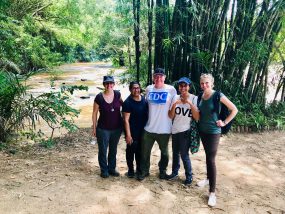
Dr. Ben Dahl, Team Lead for Vaccine Preventable Disease Surveillance in the Global Immunization Division, just returned from his third deployment to fight Ebola in the North Kivu and Ituri provinces in the Democratic Republic of Congo (DRC). Ben served as an advisor to the Minister of Health, helping to guide a data driven response. Ben worked with all areas of response, including surveillance, infection prevention and control, vaccination, border health, health communication, and laboratory testing. In addition to his role as advisor, Ben also served as CDC’s response lead in DRC and worked to address the needs of CDC staff in country. Ben also previously deployed for the DRC Equateur outbreak earlier in 2018 and for the 2014-2016 West Africa Ebola outbreak.
